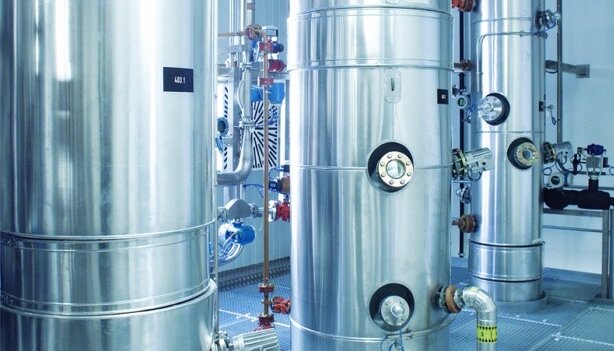Sandoz produces and distributes generic drugs, pharmaceutical and biotechnological active ingredients worldwide.
At Novartis’s largest fermentation site in Kundl, alongside biotechnological processes, chemical synthesis of pharmaceutical active ingredients are carried out in large scale.Since some years Kundl benefits of the advantages of multipurpose plants. In 2005 state of the art production went off in the 4th MP-Plant (multi purpose). As proven on two earlier plants, VTU Engineering GmbH contributed it’s services as leading engineering partner to the full satisfaction of Sandoz.
The new multipurpose plant has a reactor volume of 70 m³ and includes the following main subsystems:
- Tank farm (for storage an buffer purposes)
- Synthesis consisting of 10 reactors up to 13 m³ in different steel grades containing special equipment e.g. product purification
- Product isolation utilising sold/liquid separation, drying, solids filling systems, etc.
- solvent recycling utilising distillation columns, thin film vaporizers, etc.
VTU was responsible for engineering and qualification and accompanied the project, which was erected in record time, ranging from conception via process design to start up support. Furthermore the whole plant qualification and computer validation has been accomplished. The plant is divided into main equipment groups, the so called units. These groups consist of defined, repeating modules (e.g. module condenser, heating/cooling module). The desk, as central unit, connects the single units via flexible hoses. Each unit combination can be achieved easily via switching these connections. This module system offers huge advantages during the whole plant life. Design, programming of process automations, purchase and erection is easier, faster and less error prone. Also training of staff is simple and quick. VTU developed and optimised this module system on a number of plants in the past. The whole plant operates fully automatic. The recipes are controlled via a centralised process control system.
Special attention was paid on the simplicity and reproducibility of the process logic, which was delivered by VTU. Running through the recipes the required units are booked, the procedure is carried out and afterwards released again. The possibility of operating a number of recipes simultaneous yields considerable time savings during the production process. Thus the whole plant is designed cip-able, it is possible to clean the plant unit wise via cip-procedures in very short time, requiring only minor connection modifications. As proven on former projects VTU also applied the unit owner principal on this design task. That means each process engineer was responsible for “his” unit from the development of the PID till starting up. In opposite to specialised design organisation structures where single engineers are responsible for single equipment types (pumps, vessels,...) the unit owner principal triggers a significantly better cross linked thought patterns and therefore an improved process. In addition the responsible contact person of the respective subsystem is always obvious for the client and for suppliers.

